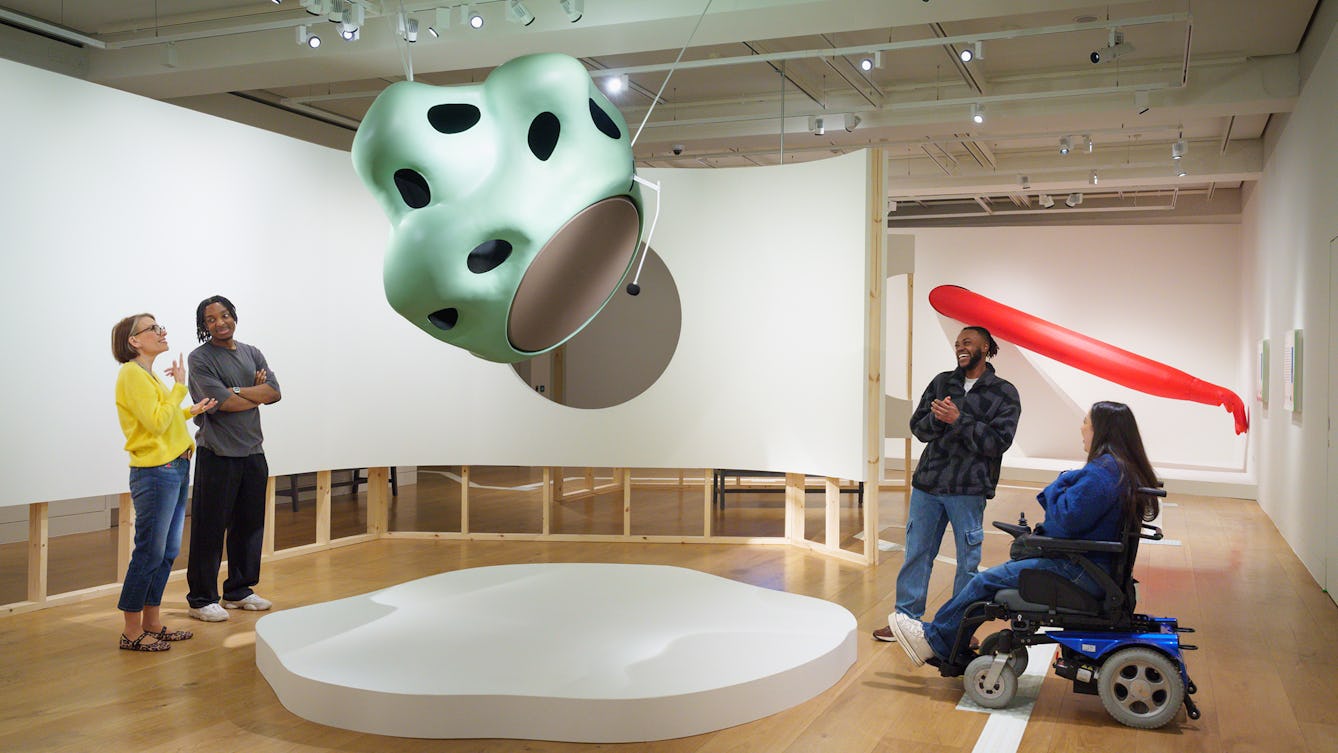Hello I am Laurie Britton Newell the curator of 1880 THAT, which is a new exhibition by the artists Christine Sun Kim and Thomas Mader. The artwork in the exhibition explores sign language’s relationship to spoken language, and seeks to draw attention to historic decision-making that still influences how we communicate today.
The exhibition’s title, '1880 THAT', is a reference to The Second International Congress on Education of the Deaf, which was held in Milan in 1880. At the conference the attendees, who were predominantly hearing people, discussed whether oral education should replace sign language in Deaf schools. In the aftermath of the Milan conference the teaching of sign language was sidelined and suppressed, resulting in exclusion and stigma for Deaf people around the world. The impacts of this are still felt to this day.
The word THAT in the context of the exhibition title is an American Sign Language term that adds emphasis to a statement. It can mean different things such as: ‘That’s what I mean!’ and ‘Enough said’. Here it’s used to add significance to the date 1880, essentially underlining that the Milan Conference was a very significant event in Deaf history.
There are nine artworks in the exhibition that range from large moving sculptures to smaller scale drawing and films. The gallery walls are painted white, and the atmosphere is bright and spacious. There are several freestanding curved walls that are arranged at different angles in the middle of the gallery. There are window apertures within them that allow you to look through at different artworks and across the gallery.
Kim and Mader’s artworks use word-play, visual puns and are full of humour. They want to draw attention in a very direct way to the ripple effects of the Milan conference, to highlight the dangers of what happens when there is a disconnection between policymaking and the people impacted by those decisions.
Several artworks in the exhibition refer to Alexander Graham Bell, the inventor of the telephone. He was also involved in Deaf education. He was a prominent spokesperson who argued against sign language and for this reason he is often regarded negatively by Deaf people.
The '1880 THAT' exhibition addresses the fundamental human right to communicate and asks us to consider what it means to live with the threat of losing one's language. The exhibition also invites you to explore new possibilities for understanding between signed and spoken languages.
